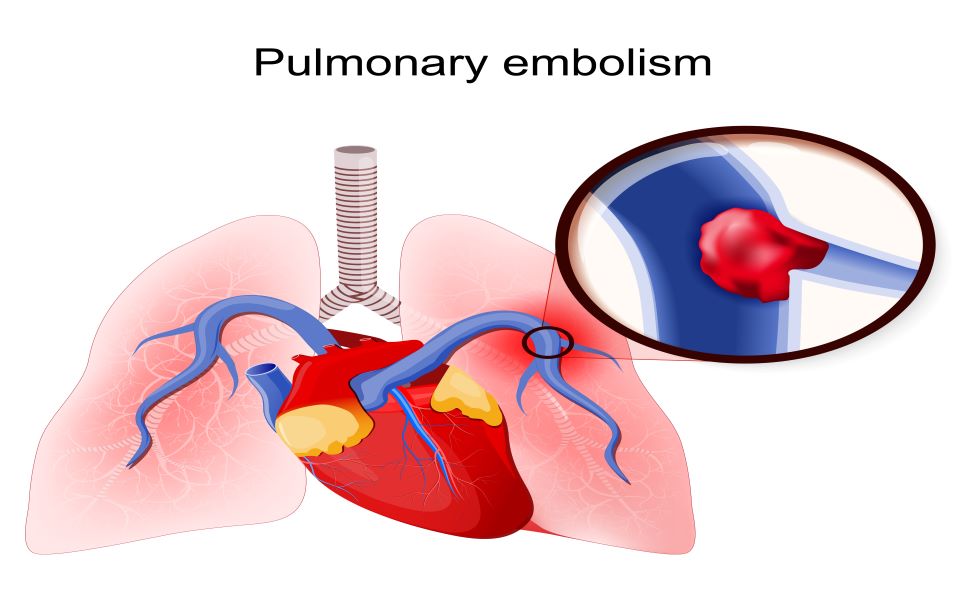A pulmonary embolism occurs when a blood clot lodges in an artery in your lung, blocking blood flow to pulmonary blood vessels. Blood clots usually originate in your legs, pelvis, and sometimes your arms before breaking away from the vein wall. The clot travels through your bloodstream and heart before getting stuck in your lungs.
The lack of blood flow damages the affected portion of your lungs, creating a loss in lung capacity. The lack of function can cause pulmonary hypertension. Roughly 370,000 people experience a pulmonary embolism each year. The severity of that condition depends on your overall health and how quickly you seek medical attention.
Pulmonary Embolism Symptoms
The larger the blood clot, the more severe the symptoms.
Common pulmonary embolism symptoms include:
- Shortness of breath: You may suddenly feel breathless even at rest.
- Chest pain: You’ll likely experience sharp pain when you take a deep breath, cough or bend over.
- Fainting: A drop in heart rate or blood pressure can cause dizziness, light-headedness or loss of consciousness.
Other symptoms:
- Excessive sweating
- Fever
- Leg pain or swelling
- Rapid or irregular heart rate
- Coughing that produces bloody mucus
- Discolored or clammy skin
Pulmonary Embolism Risk Factors
You’re at an increased risk for a pulmonary embolism if you have a personal or family history of blood clots. Surgery is one of the greatest pulmonary embolism risk factors, so you’ll be monitored closely before and after a surgical procedure.
Health conditions that affect your blood pressure, heart rate and circulation also pose problems, especially heart disease, high blood pressure and high cholesterol. Cancer may also increase your likelihood of developing a pulmonary embolism.
Other risk factors to consider:
- Tobacco use
- Obesity
- Use of oral estrogen contraceptives
- Pregnancy
- Extended periods of inactivity or bed rest
Long-Term Care for Pulmonary Embolism Treatment
Pulmonary embolism treatment requires blood thinners to prevent a clot from getting bigger as your body breaks it down. Recovering from a pulmonary embolism can last weeks or months, depending on your overall health, the size of the clot and the severity of the lung damage.
Maintaining good circulation and blood flow is important, so physical therapy and exercise can boost your recovery. Certain over-the-counter medications may have adverse interactions with blood thinners and should be monitored.
Long-term care provides the necessary support to recover from a pulmonary embolism. Embassy Healthcare offers medication management, various therapy options and vitals monitoring to help you get back on your feet.
Pulmonary Embolism Treatment in Florida, Ohio, and Pennsylvania
Embassy Healthcare offers an Empower Pulmonary care program to promote respiratory health. Our skilled nursing staff includes a respiratory therapist who visits weekly and a pulmonologist who’s onsite twice a month.
Call 216-378-2050 to learn more about our pulmonary care program and schedule a tour of one of our long-term care facilities.

